Our tool for managing your permission to our use of cookies is temporarily offline. Therefore some functionality is missing.
The look: breathtakingly beautiful. The character: boundlessly free. The BMW 2 Series Convertible is a demonstration of sporty freedom and elegance. The combination of dynamic design, powerful engines and exclusive equipment in the redesigned interior opens new horizons of boundless driving pleasure. The sportiest convertible of its class leaves no doubt as to how attractive independence can be.
BMW 230i Convertible:
Fuel consumption in l/100 km (combined): 6.2–6.0
CO2 emissions in g/km (combined): 143–138
INDEPENDENCE IN ITS MOST MOVING FORM.
Highlights of the BMW 2 Series Convertible.

AN UNCOMPROMISING AESTHETE.

INTO THE COMFORT ZONE.

OPEN MINDED.

BOUNDLESSLY DYNAMIC.
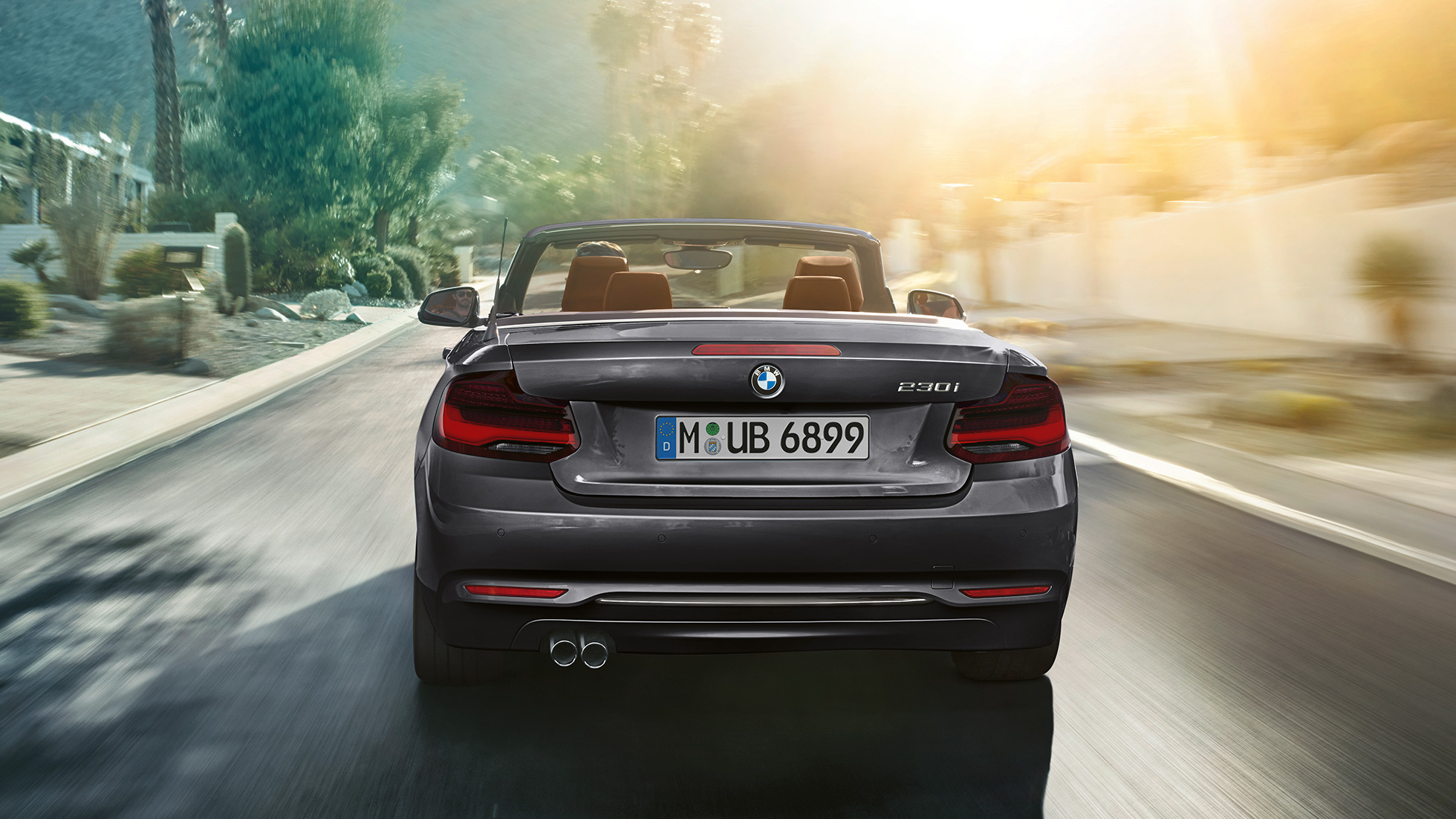
AN UNCOMPROMISING AESTHETE.
The exterior of the BMW 2 Series Convertible.

INTO THE COMFORT ZONE.
The interior of the BMW 2 Series Convertible.

OPEN MINDED.
At speeds of up to 50 km/h, the roof can be operated fully automatically, leaving the sky as the only limit.
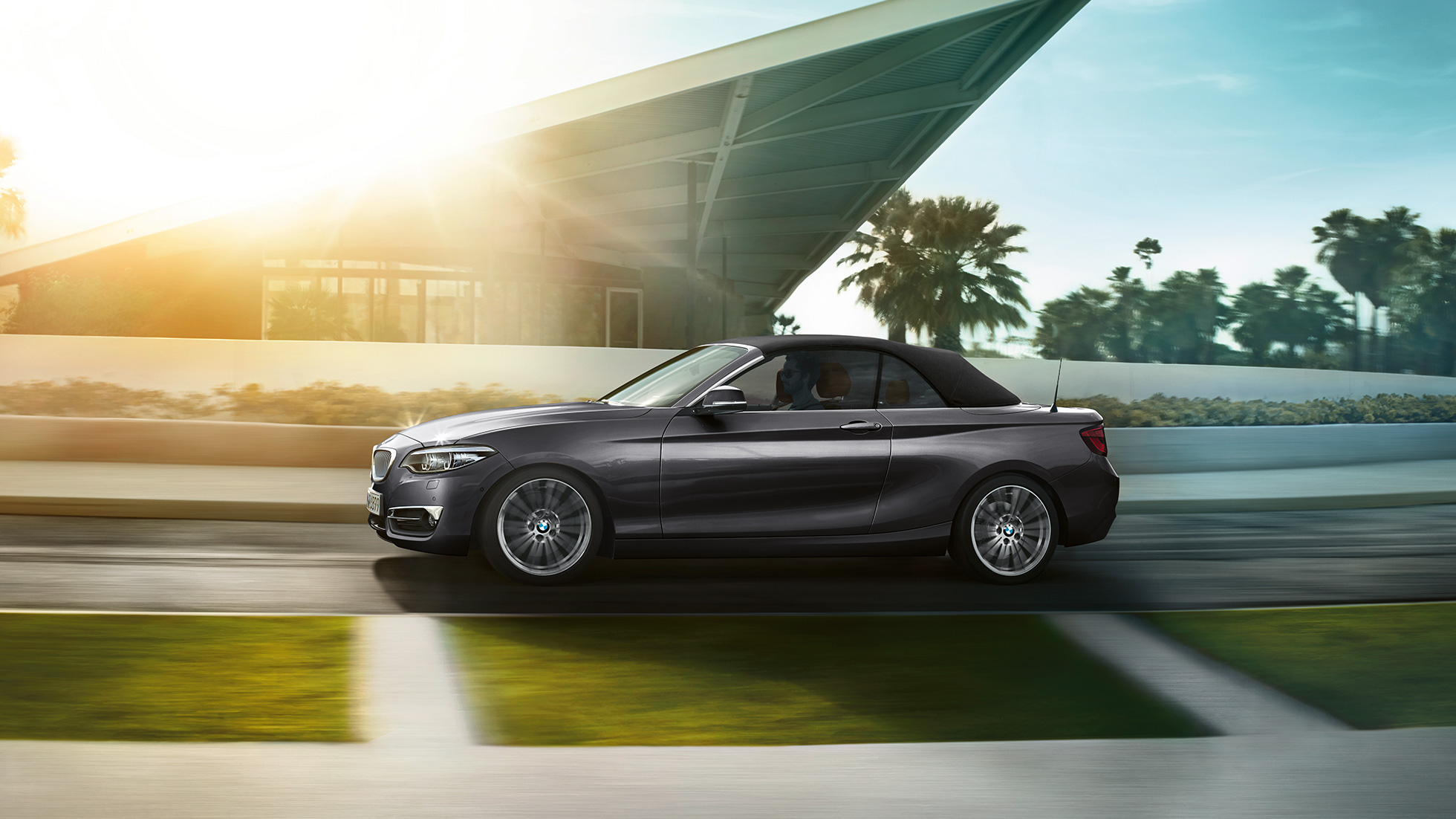
BOUNDLESSLY DYNAMIC.
Driving dynamics and efficiency of the BMW 2 Series Convertible.
OLIVER HEILMER, HEAD INTERIOR DESIGN BMW AUTOMOBILEThe BMW 2 Series Convertible's sporting characteristics create a more striking, present appearance.
POWERFUL STATEMENTS.
The design of the BMW 2 Series Convertible.







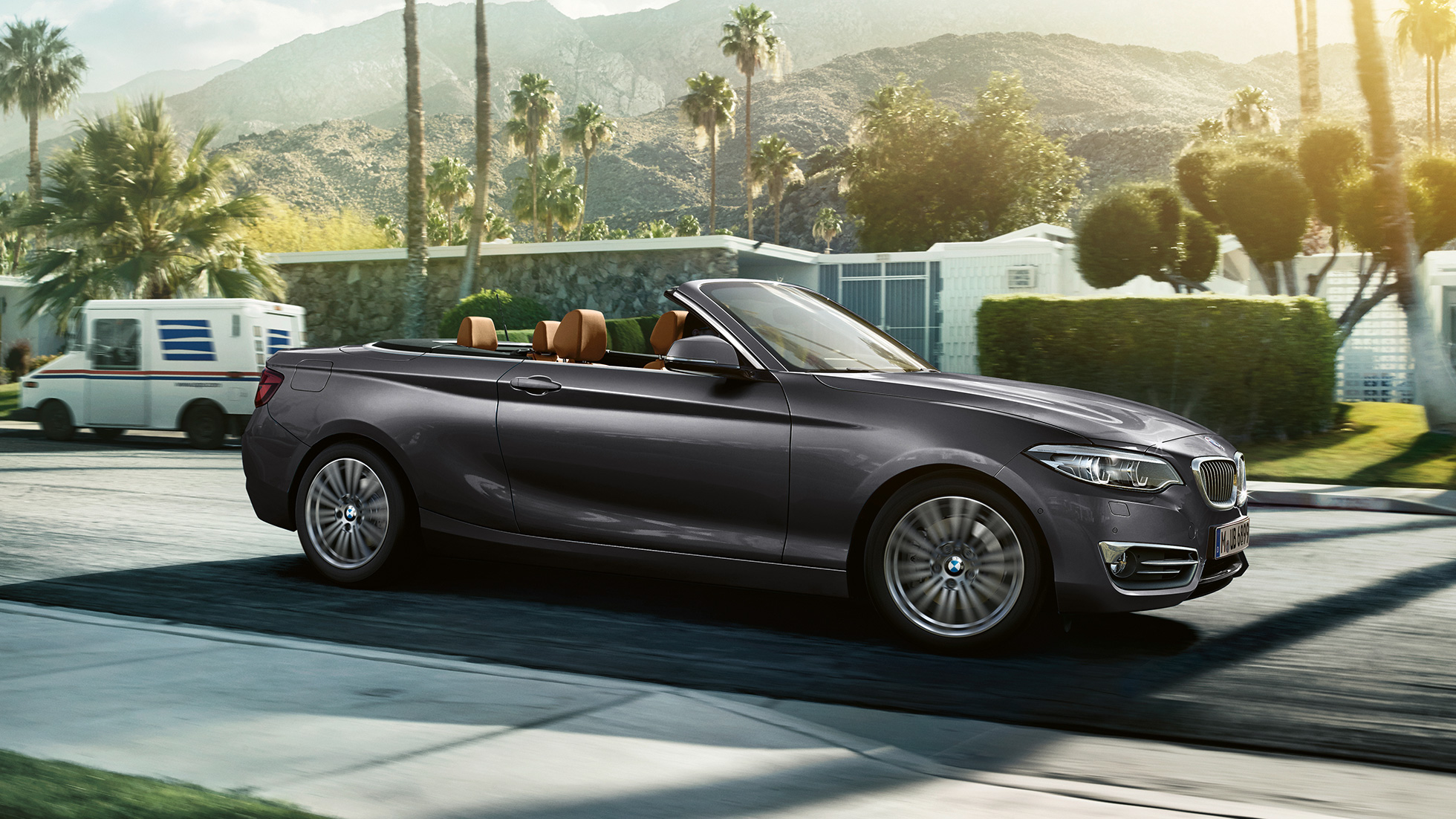

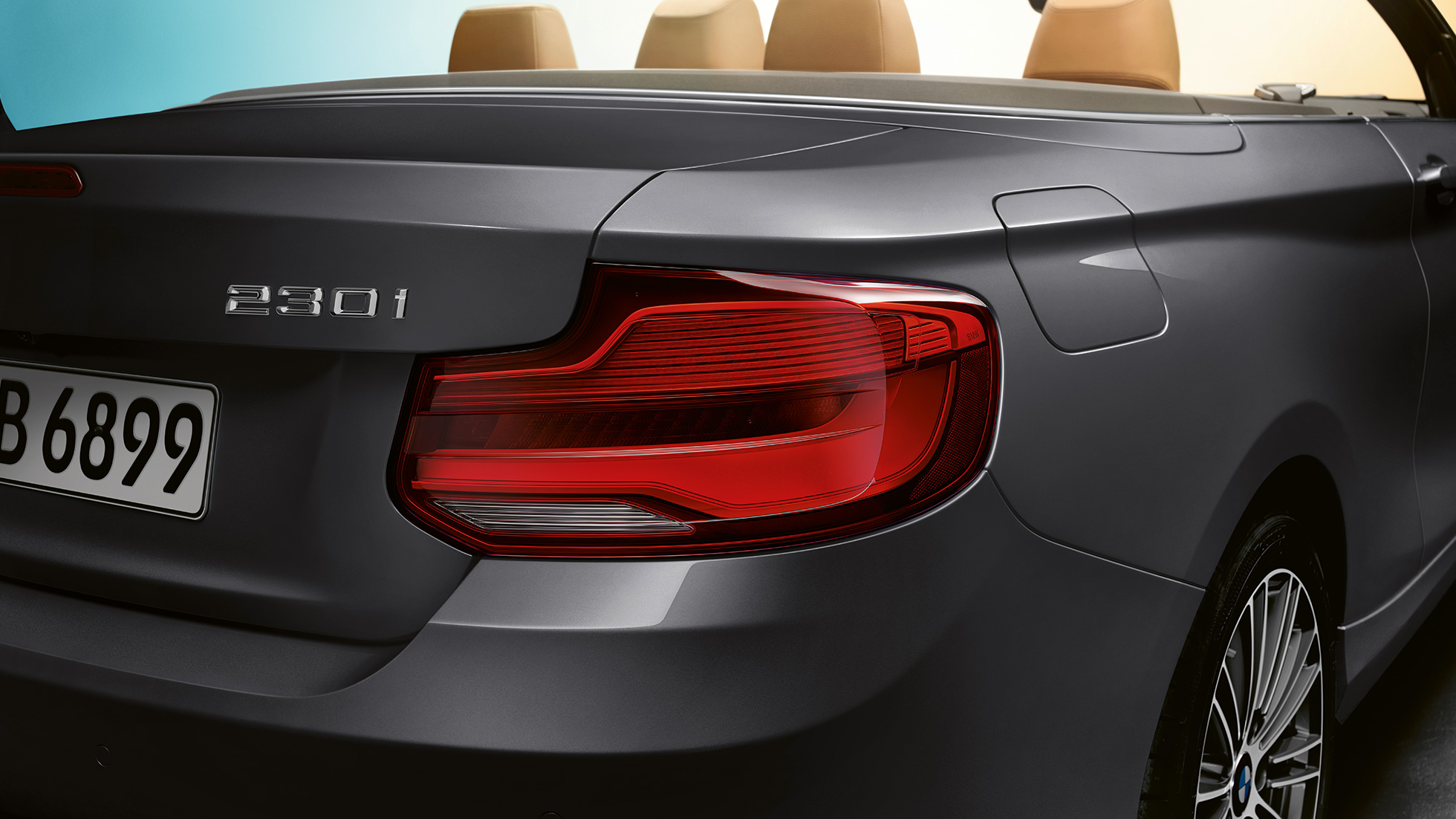
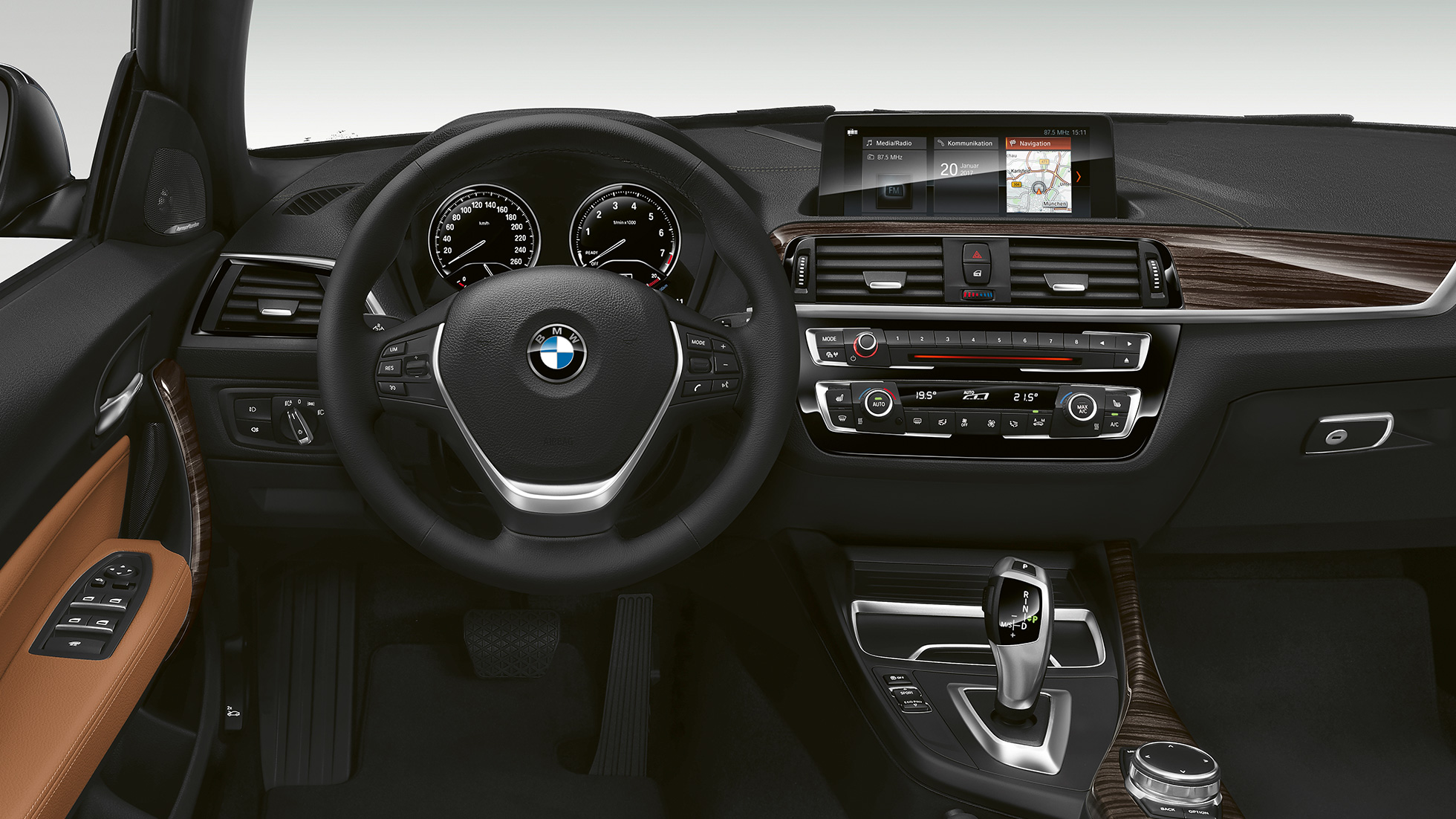
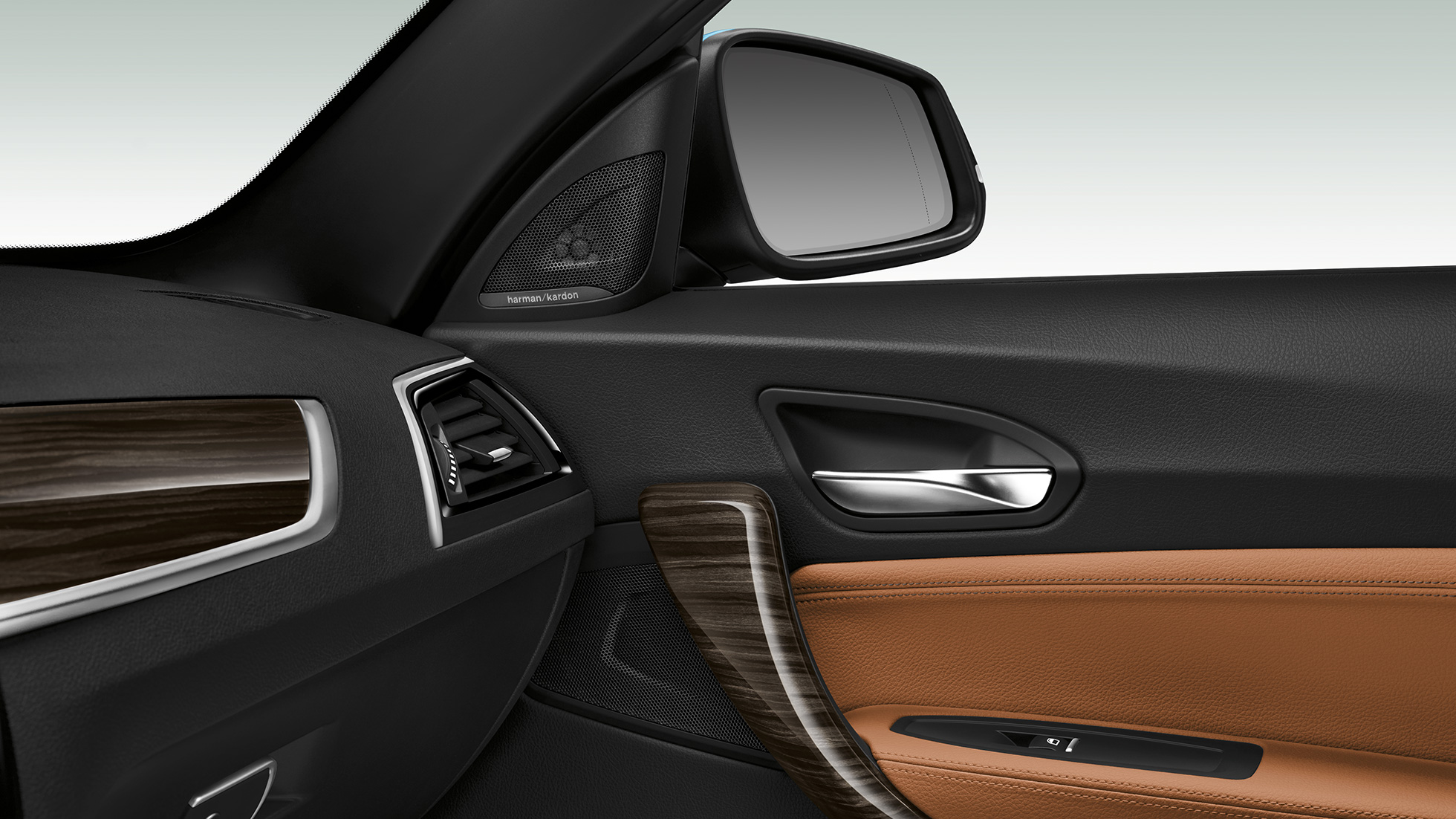
Fuel consumption and CO2 emissions.
BMW M240i Convertible:
Fuel consumption in l/100 km (combined): 8.3 [7.4]
CO2 emissions in g/km (combined): 189 [169]
BMW 230i Convertible:
Fuel consumption in l/100 km (combined): 6.2–6.0
CO2 emissions in g/km (combined): 143–138
BMW 220i Convertible:
Fuel consumption in l/100 km (combined): 6.2–5.8
CO2 emissions in g/km (combined): 133–141
BMW 218i Convertible:
Fuel consumption in l/100 km (combined): 6.0–5.5 [5.8–5.3]
CO2 emissions in g/km (combined): 139–129 [134–124]
The values of fuel consumptions, CO2 emissions and energy consumptions shown were determined according to the European Regulation (EC) 715/2007 in the version applicable at the time of type approval. The figures refer to a vehicle with basic configuration in Germany and the range shown considers optional equipment and the different size of wheels and tires available on the selected model.
The CO2 efficiency specifications are determined according to Directive 1999/94/EC and the European Regulation in its current version applicable. The values shown are based on the fuel consumption, CO2 values and energy consumptions according to the NEDC cycle for the classification.
For further information about the official fuel consumption and the specific CO2 emission of new passenger cars can be taken out of the „handbook of fuel consumption, the CO2 emission and power consumption of new passenger cars“, which is available at all selling points and at https://www.dat.de/angebote/verlagsprodukte/leitfaden-kraftstoffverbrauch.html.

